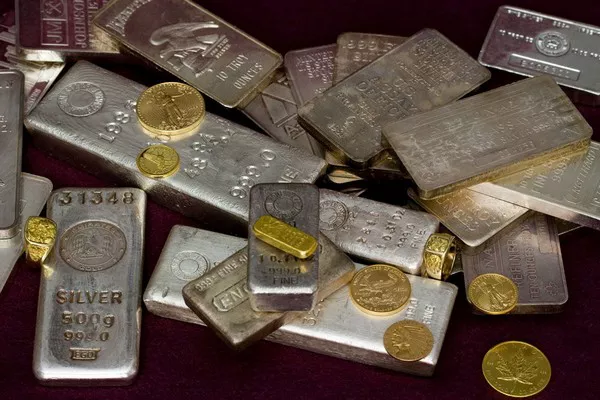Silver, a precious metal prized for its beauty and utility, has been used for centuries in jewelry, coins, utensils, and various other items. However, distinguishing genuine silver from silver-plated or imitation items can be challenging. This article will guide you through various methods to determine if something is made of silver, encompassing visual inspection, hallmark verification, physical tests, and chemical testing.
1. Visual Inspection
A. Color and Shine
Genuine silver has a distinctive sheen that is bright yet subdued. Unlike stainless steel or chrome, which have a more reflective and cooler tone, silver has a warmer, more lustrous appearance. Over time, silver develops a patina, a slight darkening that can be polished off but often adds to the charm and authenticity of the piece.
B. Tarnish
Silver tarnishes over time due to a chemical reaction with sulfur-containing substances in the air. This tarnish appears as a dark or black layer on the surface. While other metals can also tarnish, the pattern and color of silver tarnish are distinctive. Regular silver polishing can help to identify genuine silver, as tarnish removal reveals the true color and shine underneath.
C. Weight and Sound
Silver is denser than most base metals used in imitation pieces. Genuine silver items tend to feel heavier than their size would suggest. Additionally, when gently tapped, silver produces a clear, ringing tone, unlike the duller sound produced by metals like pewter or lead.
2. Hallmark Verification
Hallmarks are stamps or marks placed on silver items to certify their purity and authenticity. These marks vary by country and period but typically include:
A. Purity Marks
The most common hallmark is the purity mark, indicating the silver content. Sterling silver, for example, is often marked as “925,” representing 92.5% silver content. Other common marks include “800” (80% silver) and “999” (99.9% pure silver).
B. Maker’s Mark
Many silver items carry a maker’s mark, identifying the craftsman or company that produced the item. These marks can be researched to verify authenticity and provenance.
C. Assay Office Marks
In some countries, assay offices test and mark silver items to guarantee their purity. These marks often include symbols or letters specific to the assay office.
D. Date Letters and Duty Marks
Older silver pieces may also bear date letters, which indicate the year of manufacture, and duty marks, showing that a tax has been paid on the item.
3. Physical Tests
A. Magnet Test
Silver is not magnetic. If a magnet sticks to the item, it is not made of pure silver. However, this test is not definitive, as some non-magnetic metals can be used to make silver-plated items.
B. Ice Test
Silver has a high thermal conductivity. Place an ice cube on the silver item; genuine silver will melt the ice faster than most other metals. This is because silver rapidly conducts heat from your hand to the ice.
C. Smell Test
Genuine silver is odorless. If you detect a metallic smell, the item may be made from a different metal.
4. Chemical Tests
A. Nitric Acid Test
This test should be conducted with caution, preferably by a professional. When a drop of nitric acid is applied to a small, inconspicuous area of the item, genuine silver will turn a creamy white color, while base metals will produce a green color.
B. Silver Testing Kits
Commercial silver testing kits are available, which include acids and solutions designed to test for silver purity. These kits usually come with instructions and can be a reliable way to test silver at home.
5. Professional Appraisal
If uncertainty persists after conducting the above tests, consider seeking a professional appraisal. Experienced jewelers and appraisers have the tools and expertise to accurately identify and value silver items.
6. Advanced Techniques
For those with access to specialized equipment, more advanced methods can be employed:
A. X-Ray Fluorescence (XRF)
XRF is a non-destructive technique that uses X-rays to determine the elemental composition of a material. It can provide an accurate analysis of silver content without damaging the item.
B. Density Test
Density testing involves calculating the density of the item by measuring its weight and volume. Silver’s density is approximately 10.49 grams per cubic centimeter, and deviations from this value can indicate whether the item is genuine or not.
See also Why Are PAMP Suisse Silver Bars So Expensive?
Conclusion
Identifying genuine silver requires a combination of methods, from simple visual inspections to more advanced chemical and physical tests. By understanding the characteristics of silver, such as its color, weight, and tarnishing behavior, and recognizing hallmark stamps, you can make informed decisions about the authenticity of silver items. For conclusive results, professional appraisals and advanced techniques like XRF analysis offer precise and reliable verification.
Whether you are a collector, investor, or simply curious about the authenticity of a silver piece, these methods will help you distinguish between genuine silver and imitations. Being informed not only protects your investment but also enhances your appreciation of the beauty and value of this timeless precious metal.


